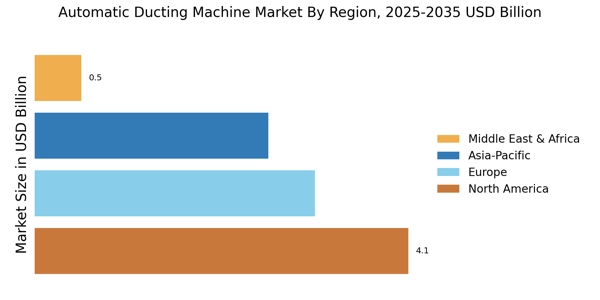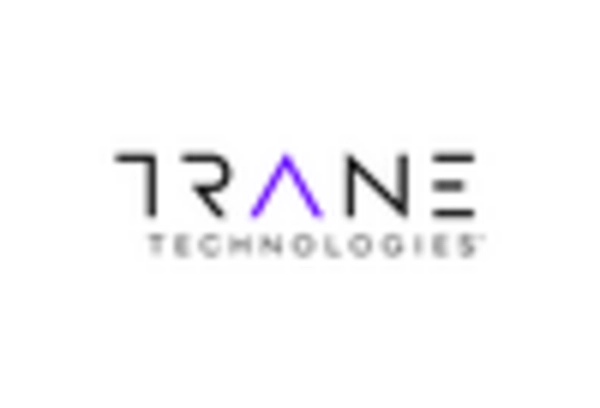Focus on Indoor Air Quality
The emphasis on indoor air quality (IAQ) is becoming a pivotal driver in the Automatic Ducting Machine Market. With growing awareness of the health impacts associated with poor air quality, there is an increasing demand for systems that ensure optimal ventilation and air filtration. Automatic ducting machines play a crucial role in maintaining IAQ by regulating airflow and minimizing contaminants. Recent studies indicate that improved IAQ can lead to a 10% increase in productivity among occupants in commercial spaces. This focus on health and well-being is likely to propel the adoption of automatic ducting machines, as businesses and homeowners prioritize environments that promote better air quality.
Rising Construction Activities
The Automatic Ducting Machine Market is poised for growth due to the rising construction activities across various sectors. As urbanization accelerates, there is an increasing need for efficient HVAC systems in residential, commercial, and industrial buildings. The construction sector has witnessed a significant rebound, with investments in infrastructure development reaching unprecedented levels. For instance, the construction output in several regions has shown a year-on-year increase of approximately 5%. This surge in construction activities is expected to drive the demand for automatic ducting machines, as builders seek to implement advanced solutions that enhance air quality and energy efficiency in new developments.
Integration of Smart Technologies
The integration of smart technologies into the Automatic Ducting Machine Market is transforming traditional ducting systems. The advent of IoT-enabled devices allows for real-time monitoring and control of airflow, enhancing system efficiency and user convenience. This technological evolution not only improves operational performance but also aligns with the growing consumer preference for automation in building management. Market data indicates that the smart HVAC market is projected to grow at a compound annual growth rate of 12% over the next five years, suggesting a robust opportunity for automatic ducting machines equipped with advanced technologies. This integration is likely to be a key driver in the Automatic Ducting Machine Market.
Increased Demand for Energy Efficiency
The Automatic Ducting Machine Market is experiencing a notable surge in demand for energy-efficient solutions. As industries and commercial establishments strive to reduce operational costs and minimize their carbon footprint, the adoption of automatic ducting machines has become increasingly prevalent. These machines facilitate precise airflow management, which is essential for optimizing energy consumption in HVAC systems. According to recent data, energy-efficient ducting solutions can lead to a reduction in energy costs by up to 30%. This trend is likely to continue as regulatory frameworks increasingly emphasize energy efficiency, thereby driving the growth of the Automatic Ducting Machine Market.
Regulatory Support for HVAC Innovations
The Automatic Ducting Machine Market is benefiting from regulatory support aimed at promoting HVAC innovations. Governments are increasingly implementing standards and incentives that encourage the adoption of advanced ducting solutions. These regulations often focus on energy efficiency, emissions reduction, and overall system performance. For example, various regions have introduced tax credits and rebates for businesses that invest in energy-efficient HVAC systems, which includes automatic ducting machines. This regulatory landscape not only fosters innovation but also enhances market competitiveness, making it a significant driver for growth in the Automatic Ducting Machine Market.


















Leave a Comment